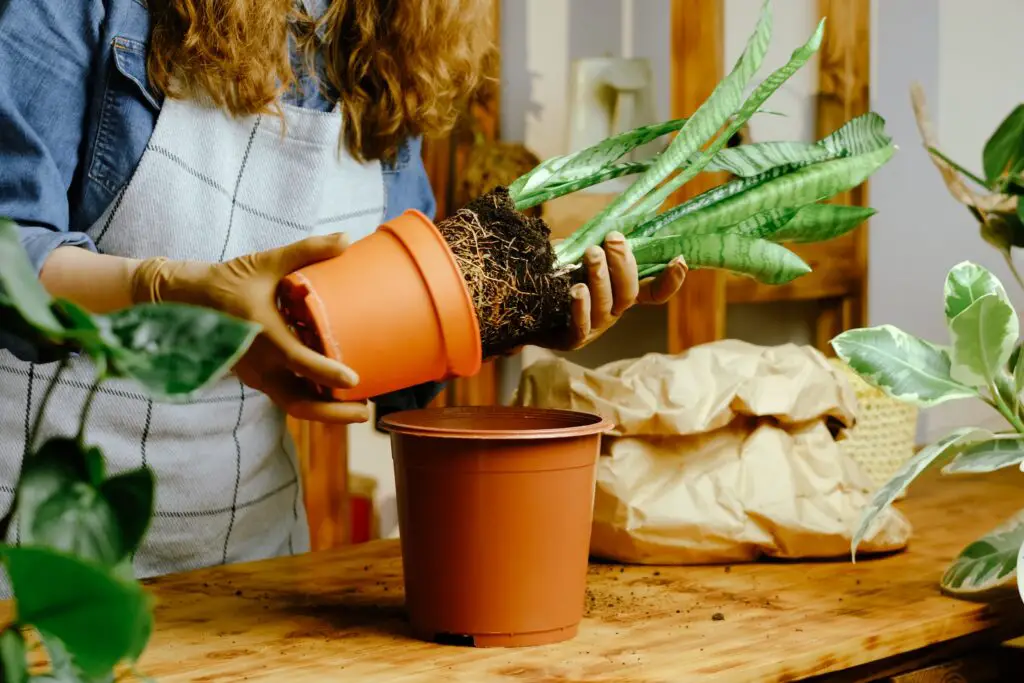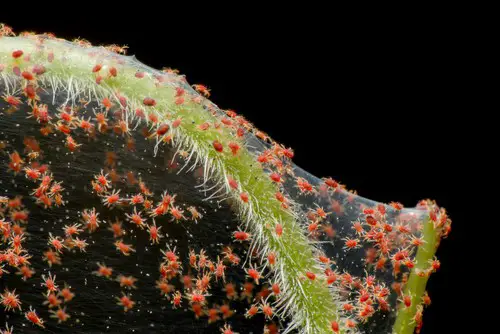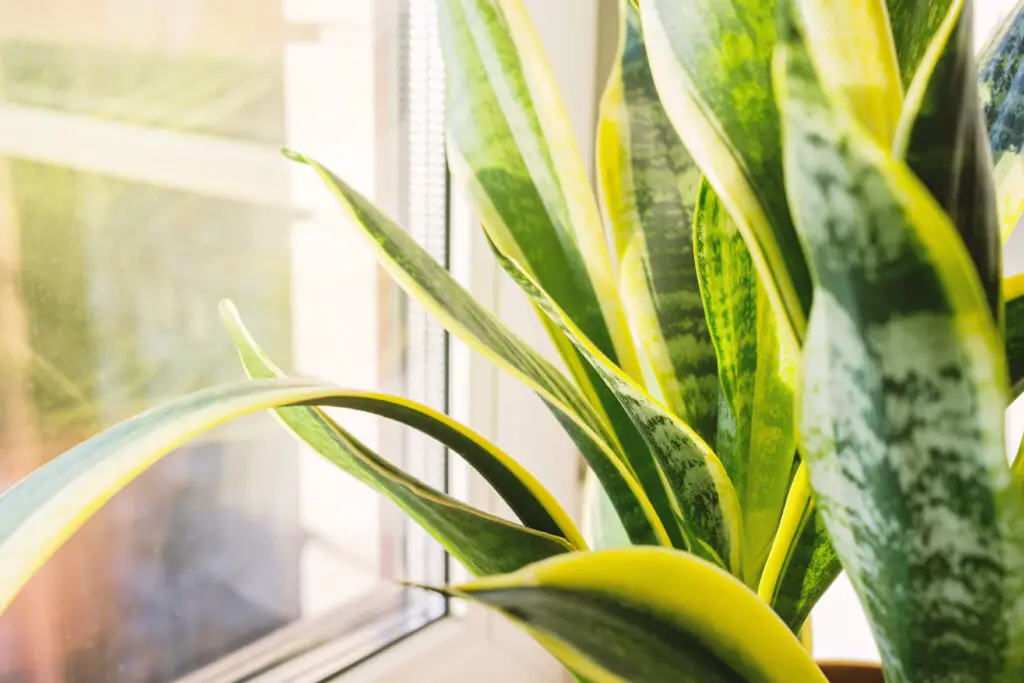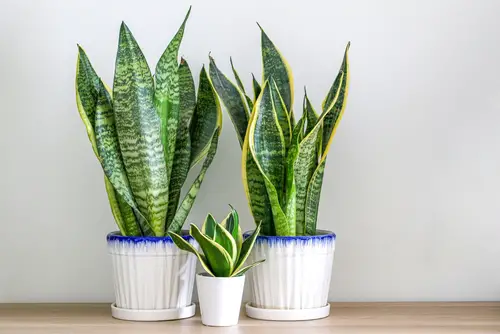Snake plants are popular houseplants due to their ease of care and ability to thrive in low-light conditions. However, one common issue that snake plant owners face is brown spots on the leaves. These spots can be unsightly and may indicate a problem with the plant’s health.
Understanding the causes of brown spots on snake plant leaves is crucial to treating and preventing them. Common causes include overwatering, pests, and fungal diseases.
Proper care, including appropriate watering and regular inspection for pests, can help prevent brown spots from developing in the first place. If brown spots do appear, treatment options may include fungicides and pesticides, depending on the cause of the problem.
Key Takeaways on How to Treat Brown Spots on Snake Plant Leaves
- Brown spots on snake plant leaves are a common issue that can indicate a problem with the plant’s health.
- Common causes of brown spots include overwatering, pests, and fungal diseases.
- Proper care, including appropriate watering and regular inspection for pests, can help prevent and treat brown spots on snake plant leaves.
Also don’t miss:
- Small Brown Spots on Pothos Leaves
- Small Brown Spots on Philodendron Leaves
- Small Brown Spots on Orchid Leaves
Understanding Brown Spots on Snake Plant Leaves

Snake plants are a popular houseplant choice for their low maintenance and air-purifying qualities. However, they are not immune to certain issues, such as brown spots on their leaves. Brown spots on snake plant leaves can be caused by a variety of factors, including fungal diseases, pests, and environmental stressors.
One of the most common causes of brown spots on snake plant leaves is fungal diseases. Fungal diseases such as red leaf spot, southern blight, and rust can cause brown spots to appear on the leaves.
These diseases are often caused by overwatering, poor drainage, or high humidity levels. To prevent fungal problems, it is important to avoid overwatering and ensure that the plant has proper drainage.
Pests such as spider mites and mealybugs can also cause brown spots on snake plant leaves. These pests feed on the plant’s sap and can cause brown spots to appear on the leaves. To prevent pest problems, it is important to regularly inspect the plant for signs of infestation and treat any pests promptly.
Environmental stressors such as direct sunlight, cold drafts, and dry air can also cause brown spots on snake plant leaves. Snake plants prefer bright, indirect light and temperatures between 60-85°F.
To prevent environmental stress, it is important to provide the plant with the proper growing conditions and avoid exposing it to extreme temperatures or drafts.
Common Causes of Brown Spots
Snake plants are known for their hardiness and ease of care, but they are not immune to developing brown spots on their leaves. Brown spots can be caused by a variety of factors, including:
1. Overwatering and Underwatering
Snake plants prefer well-draining soil and can suffer from root rot if they are overwatered. On the other hand, if they are underwatered, their leaves can become dry and develop brown tips and spots.
2. Light and Direct Sunlight
While snake plants can tolerate low light conditions, they need bright, indirect light to thrive. Too much direct sunlight can cause sunburn and brown spots on their leaves.
3. Temperature and Heat

Snake plants are sensitive to extreme temperatures and can develop brown spots if exposed to cold or hot drafts. They prefer temperatures between 60-85°F (15-29°C).
4. Low Humidity
Snake plants can tolerate low humidity levels, but if the air is too dry, their leaves can become brown and crispy.
5. Inconsistent Watering
Snake plants prefer consistent watering schedules and can develop brown spots if their watering routine is irregular.
6. Over-Fertilization
Too much fertilizer can cause fertilizer burn and brown spots on snake plant leaves.
7. Chlorinated Water
Snake plants are sensitive to chlorine and can develop brown spots if they are watered with chlorinated tap water.
8. Plant Stress and Dehydration
Snake plants can develop brown spots if they are stressed or dehydrated. This can be caused by a variety of factors, including improper watering, low humidity, and extreme temperatures.
To prevent brown spots on snake plant leaves, it is important to provide them with the right growing conditions. This includes well-draining soil, consistent watering schedules, bright, indirect light, and temperatures between 60-85°F (15-29°C).
Additionally, snake plants should be watered with non-chlorinated water and fertilized sparingly.
Pests and Diseases Leading to Brown Spots

Snake plants are generally hardy plants that are resistant to most pests and diseases. However, they can still fall victim to a few common issues that can lead to brown spots on their leaves. In this section, we will discuss some pests and diseases that can cause brown spots on snake plant leaves.
Pests
Mealybugs, aphids, whiteflies, thrips, and spider mites are some of the common pests that can infest snake plants. These pests feed on the plant’s sap, causing damage to the leaves, stems, and roots. They can also transmit diseases from one plant to another.
Mealybugs are particularly common in snake plants and can be identified by their white, cottony appearance. Aphids and whiteflies, on the other hand, are usually found on the undersides of leaves and can cause yellowing and curling of leaves. Thrips and spider mites are tiny insects that can cause brown spots on leaves.
Fungal Diseases
Fungal diseases are another common cause of brown spots on snake plant leaves. Fungal infections can be caused by overwatering, poor drainage, and high humidity. Root rot is a fungal disease that can cause brown spots on leaves, as well as wilting and yellowing of the plant.
Southern blight is another fungal disease that can cause brown spots on leaves and stems. Red leaf spot and bacterial leaf spot are also fungal diseases that can cause brown spots on the leaves of snake plants.
Other Issues
In addition to pests and fungal diseases, there are other issues that can cause brown spots on snake plant leaves. Rust is a fungal disease that can cause brown spots on the leaves and stems of snake plants. Infected leaves should be removed and destroyed to prevent the spread of the disease.
Overwatering can also cause brown spots on leaves, as it can lead to root rot. Underwatering can cause leaves to turn brown and dry up. In some cases, extreme sunlight exposure can also cause brown spots on leaves.
Treatment and Prevention of Brown Spots

Brown spots on snake plant leaves can be treated and prevented with a few simple steps.
Treatment
If the brown spots are caused by fungal disease, then applying a copper-based fungicide can help eliminate the problem. Another effective treatment is to remove the affected leaves and treat the soil with fungicide or heat. For severe cases, sulfur can also be used to control the fungal disease.
If the brown spots are caused by insects, then using a natural or chemical pesticide can help eliminate the bugs. In addition, wiping the leaves with a damp cloth or spraying them with a spray bottle filled with rubbing alcohol can help remove the insects.
Prevention
Preventing brown spots on snake plant leaves is all about creating the right environment for the plant to thrive. Here are some tips to prevent brown spots:
- Use a well-draining potting mix when repotting the plant, and make sure to use fresh soil.
- Prune the plant regularly to remove any dead or damaged leaves.
- Use a filtration system to remove any impurities from the water before watering the plant.
- Place the plant in indirect light, as too much direct light can cause sun scorch and brown spots.
- Avoid over-fertilizing the plant, as too much fertilizer can cause fertilizer burn and damage the leaves.
- Ensure the plant is getting enough chlorophyll through photosynthesis, which can be achieved by providing the plant with the right amount of light and water.
Snake Plant Care Tips to Avoid Brown Spots
Snake plants are easy to care for and maintain, but they can develop brown spots on their leaves due to various reasons such as overwatering, underwatering, poor lighting, and pests. Here are some care tips to avoid brown spots on snake plant leaves.
1. Watering
Watering is crucial to snake plant care. Overwatering and underwatering can lead to brown spots on the leaves. It is essential to water the plant only when the soil is dry to the touch.
The frequency of watering depends on various factors such as humidity, temperature, and light conditions. Snake plants prefer well-draining soil and pots with drainage holes to prevent waterlogging.
2. Light

Snake plants thrive in indirect light conditions. They can tolerate low light, but it may slow down their growth. Direct sunlight can burn the leaves, causing brown spots. Therefore, it is best to place the plant near a window that receives filtered light or away from direct sunlight.
3. Humidity and Temperature
Snake plants are tropical plants that thrive in a humid environment. However, they can tolerate low humidity levels. High humidity levels can cause wet conditions that can lead to brown spots on the leaves. The ideal temperature range for snake plants is between 60°F to 85°F.
4. Soil and Fertilizer
Snake plants prefer well-draining soil that is rich in nutrients. It is best to use a potting mix that is specifically formulated for indoor plants. Fertilizer burn can cause brown spots on the leaves. Therefore, it is best to fertilize the plant sparingly, especially during the growing season.
5. Propagating and Recovering
Propagating snake plants is an excellent way to recover a plant that has brown spots on its leaves. The easiest way to propagate snake plants is by dividing the rhizomes and planting them in a new pot with fresh soil. It is essential to ensure that the new pot has good drainage holes and that the soil is well-draining.
Frequently Asked Questions
What are the common causes of brown spots on plant leaves?
Brown spots on snake plant leaves can be caused by a variety of factors, including fungal diseases, pests, and improper watering. Overexposure to sunlight or frost can also worsen the problem. Applying too much fertilizer can lead to nutrient burn, which can cause brown spots on the leaves.
How can I identify a fungal infection on my snake plant?
Fungal infections on snake plants are characterized by brown spots or lesions on the leaves. The spots may be surrounded by a yellow halo and can spread rapidly if left untreated. In severe cases, the leaves may become distorted or wilted.
What is southern blight and how does it affect snake plants?
Southern blight, also known as southern wilt or southern root rot, is a fungal disease that affects snake plants. It is caused by the fungus Sclerotium rolfsii and thrives in warm, humid environments. Symptoms of southern blight include brown spots on the leaves, drooping leaves, and yellowing.
What are the best methods for treating brown spots on snake plant leaves?
Treatment for brown spots on snake plant leaves depends on the cause of the problem. If the spots are caused by a fungal infection, applying a copper-based fungicide can help eliminate the fungus. Using a natural or chemical pesticide can help eliminate pests.
If the problem is caused by improper watering or nutrient burn, adjusting the watering schedule or reducing fertilizer application can help.
Are yellow spots on snake plant leaves a sign of a fungal infection?
Yellow spots on snake plant leaves can be a sign of a fungal infection, but they can also be caused by other factors such as overexposure to sunlight or improper watering. It is important to determine the cause of the yellow spots before attempting to treat them.
How do I prevent brown spots from forming on my snake plant leaves?
To prevent brown spots from forming on snake plant leaves, it is important to provide proper care and maintenance. This includes ensuring the plant is not overwatered, avoiding overexposure to sunlight or frost, and providing adequate nutrients.
Regularly inspecting the plant for signs of pests or fungal infections can also help prevent the problem from occurring.

Hey, I’m Lisa and I’ve been an avid gardener for over 30 years. I love writing, talking and living in the garden! Feel free to connect with me on my socials below


